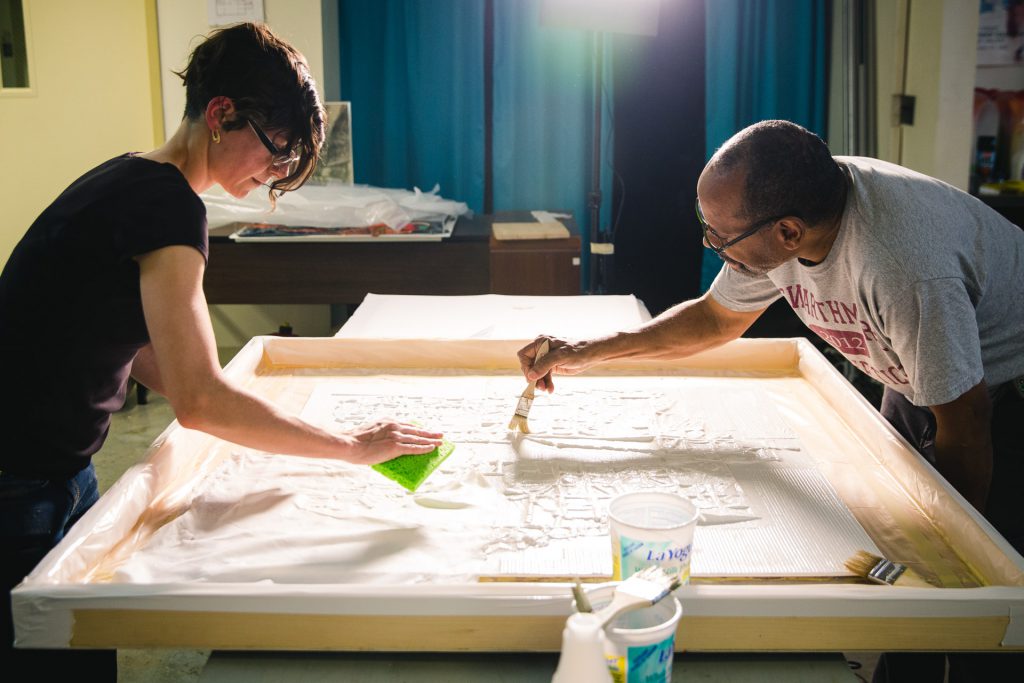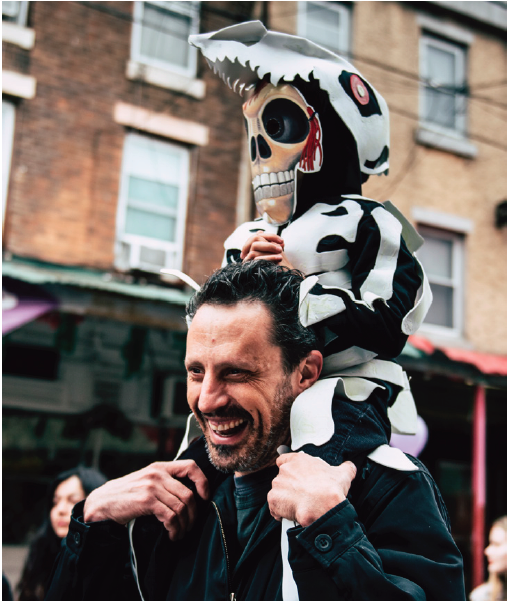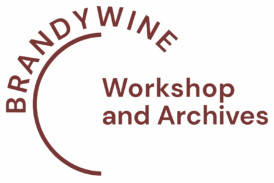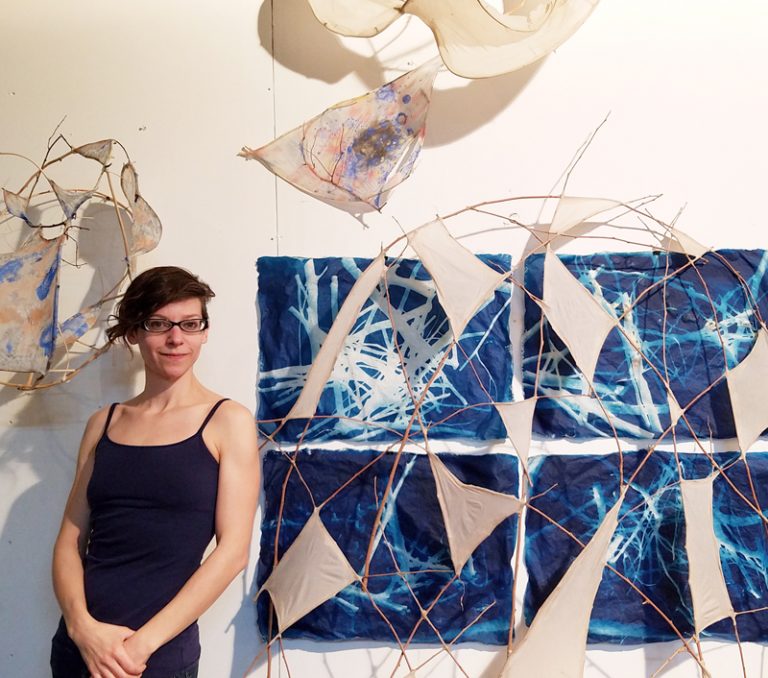Our Collaborators
OUR COLLABORATING STUDIOS
PaperTHINKtank
paperTHINKtank is a community-accessible creative hand papermaking studio in the Port Richmond neighborhood of Philadelphia, dedicated to making paper, collaborating with artists, and growing the paper, print, and book communities of the city. paperTHINKtank produces sustainable and local handmade paper and books using invasive plants and renewable resources. We offer classes and workshops in the craft of sheet production, and specialize in the creative applications of paper and paper pulp to make original paper artworks.
The goal of paperTHINKtank is to strengthen the community of hand papermakers in Philadelphia and bring greater visibility to an underrecognized artform.

Core Capacities:
Fine Handmade Papers
- Offering high quality custom fine art papers in a variety of sizes, colors, weights, and using various fibers.
- Sheet sizes range from stationery size to broadsides, and large format 19″ x 26″ up to 48″ x 84″
Pulp Beating
- Converting raw fiber from plant or textile sources into paper pulp suitable for its intended purpose (2D or 3D).
- Standard fibers (cotton, abaca, flax, etc), rag (linen, cotton, etc), and invasive plants (suitable for papermaking) can be used in any combination to make custom paper pulps.
Creative Collaboration
- Partnering with local and national artists to make custom editions of paper and/or paper artworks, unique or editioned, for special projects.
- Techniques and formats include: pulp painting, pulp printing, sculptural paper, and artist books.
Major Collaborations:
- Alexis Granwell https://www.alexisgranwell.com/
- Daniel Heyman http://www.danielheyman.com/new-portfolio.html
- Susan Viguers https://www.susanviguers.com/books
- People’s Paper Co-op http://peoplespapercoop.weebly.com/freeourmothers.html
Brief Bio
Nicole Donnelly is a hand papermaker and visual artist specializing in sculptural paper artworks. She is the President of the International Association of Hand Papermakers and Paper Artists (IAPMA), 2015–2021; and the founder and master papermaker of the creative papermaking studio paperTHINKtank. She teaches paper and book arts at the Pennsylvania Academy of Fine Art and other institutions. She received her MFA from the University of Iowa in 2009 and her BA from Bennington College. She has received grants and fellowships to complete residencies at Obara Paper Art Museum in Japan; the Philadelphia Museum of Art; Morgan Conservatory of Paper; Goldwell Open Air Museum; Vermont Studio Center; and Women’s Studio Workshop; and her artwork has been exhibited throughout the United States and internationally in Brazil, Bulgaria, Canada, China, Germany, Israel, Japan, Korea, Mexico, and the UK.
Learn More:
nicole-donnelly.com
paperthinktank.com
FAQ
There are many ways of working with paper pulp. Here is a guide to some of the most common ways: https://www.paperthinktank.com/services/creative-studio/pulp-as-medium/
- – pulling sheets of paper;
- – half-press to expel some water but not all;
- – application of pigmented pulps (using stencils or exposed screens);
- – full-press to expel as much water as possible;
- – drying the paper flat (24-48 hrs);
- – paper artworks go to the printer for litho or relief printing (any ink base can be used).
Dos Tres Press
Dos Tres Press is a print shop in south Philadelphia specializing in rigorous experimentation with relief printmaking techniques through hand-carved, reduction woodblock printing and the digital technology of platemaking with Computer Numerical Control (CNC) routing. Alexis Nutini, the founder and master printer, focuses on one-of-a-kind impressions and developing collaborative print-based projects with international and local artists as well as socially engaged Philadelphia organizations. Committed to the advancement of the printmaking medium, Dos Tres Press invites the local community to actively participate and learn through workshops, demonstrations and the mentorship of aspiring printmakers.

Core Capacities:
Limited Edition and Monoprint Relief Printmaking
- Production of multi-plate woodblock prints and single plate reductive process. Maximum paper size: 30” x 40”
- Collaborative assistance with traditional and experimental monoprint techniques utilizing found materials and readymade objects.
- Facilitation with color matching and developing complex multi-color printing in opaque, tonal and translucent inking
CNC Routing Woodcut and Object Fabrication
- Creation of woodcut blocks through the digitization of drawings and photographs. Maximum plate size: 28″ x 28″
- Development of specialized registration systems for multi-plate prints, reduction prints, puzzle compositions and freeform relief experiments.
- Fabrication of limited edition plywood objects, vignettes and images.
Collaboration Philosophy:
My collaborative process is at the heart of what printmaking has always been (a democratic and community-based medium) and serves many personal goals such as connecting and strengthening bonds with other creatives, sharing the medium with those unfamiliar or that do not normally have access to it, and as a way to accelerate my understanding and exploration of the process.
Brief Bio
Alexis Nutini is a cross-cultural artist who has been a resident of Philadelphia for more than 15 years. Born in Mexico City, he received an MFA in Printmaking from the Tyler School of Art in 2005, a BA in Fine Art from St. Mary’s College of Maryland in 2000 and completed a Fulbright Fellowship in Barcelona, Spain in 2001. Alexis teaches as an Adjunct Professor at the Tyler School of Art, Penn State Abington and instructs printmaking in community settings throughout the region. He runs Dos Tres Press, a print shop in South Philadelphia where he produces limited edition woodcuts and printmaking projects influenced by his environment and his diverse cultural upbringing.
Learn More:
alexisnutini.com

FAQ
The biggest plate that can be cut is 28 x 28 inches. The biggest paper that can be printed is 30 x 40 inches.
Support Our Work
Learn how your support is making a difference in the lives of artists, educators, and students.

